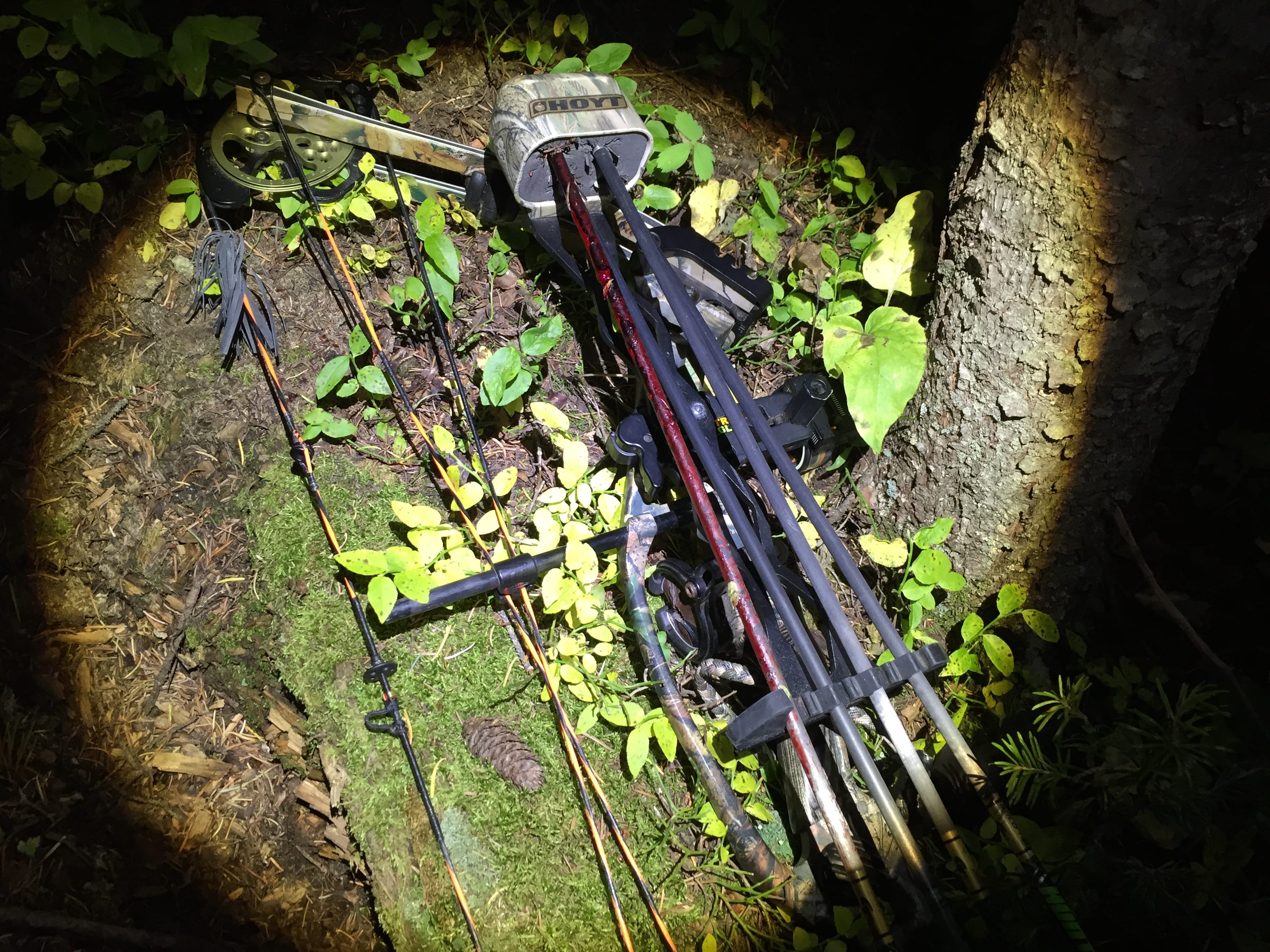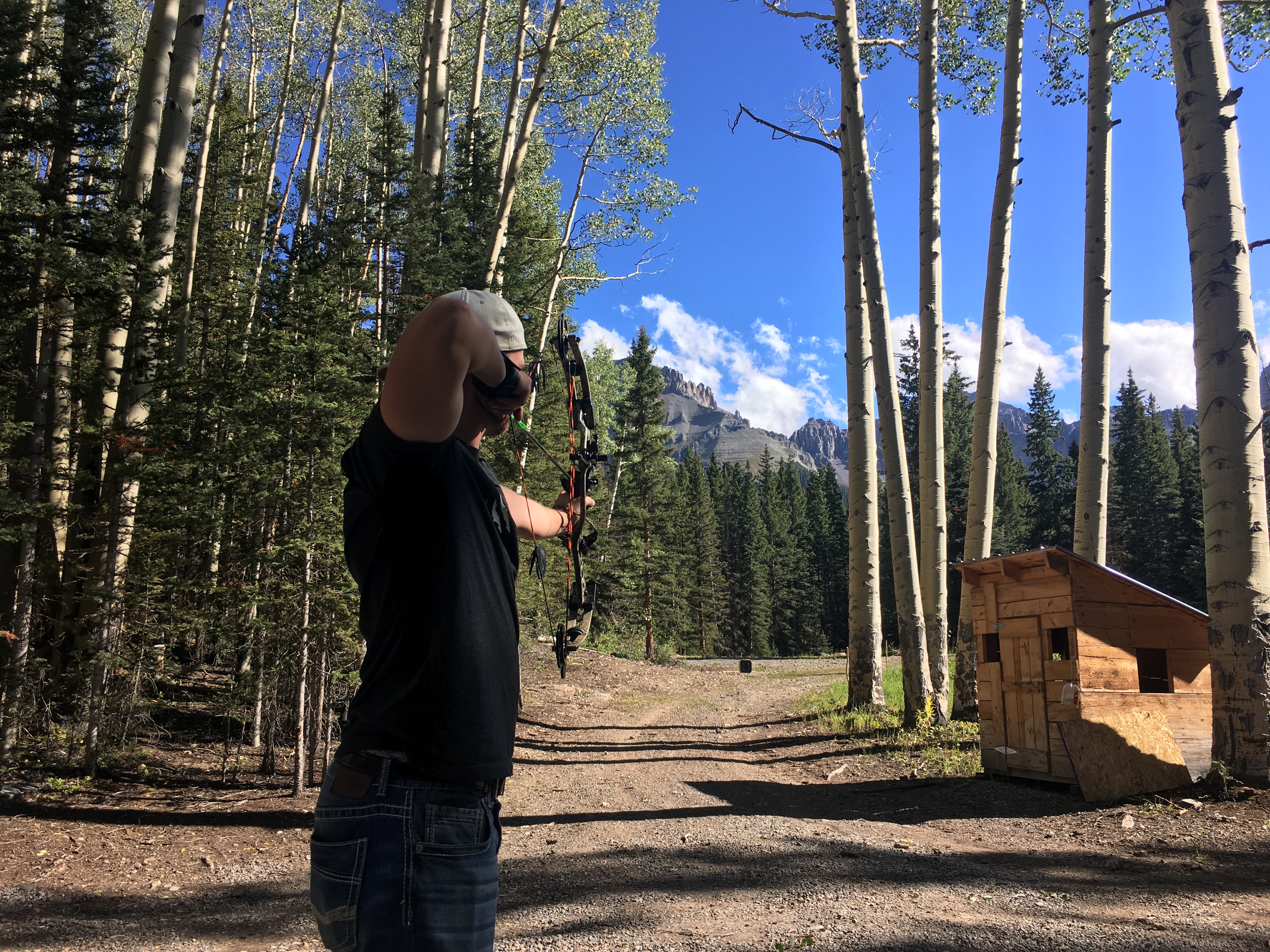transition wild
Off

By Adam Parr –
As I inch closer and emerge from the small drainage, I watch two bull elk feeding in the meadow, completely unaware of lurking danger. According to my range finder, I closed the gap to 42 yards and prepare myself for a shot. As I come to full draw, the intensity is fierce but I hold it together and settle the pin on the bigger bull. I let the arrow fly and it finds its mark behind the shoulder; I just killed my first elk, or so I thought.
After regrouping and gathering supplies for the evening track, my buddies and I start down the path in anticipation of a short track job but after four hours of following a slow but steady blood trail, we back out upon finding my arrow lying in an empty bed. The next morning we pick up the last blood with high hopes but after another half day of tracking, the search once again turned up empty. Damn.
To say that hunting is filled with highs and lows would be an understatement considering the roller coaster rides we endure as elk hunters are tremendous, and don’t always end with laughter and joy. Unfortunately, I lost that bull and the sickness I felt cannot be described in words; it can only be experienced. I walked off the mountain that day with a mix of emotions that were angry, sad, and humbled. Looking back on that hunt almost a year later, I’ve recognized that everything happens for a reason and as bad as it may seem at the time, good things can arise from unfortunate circumstances.
Although they may be obvious to some, here are three takeaways I gathered from the elk I shot but never recovered.
Rocky Mountain bull elk are built like tanks, weighing upwards of 600 pounds and standing five feet tall at the shoulder. These incredible animals are magnificent creatures that are designed to survive in harsh conditions and rugged terrain. All things considered, it’s important to know your limits and to only take shots that you’re 100% confident in. Although I was completely comfortable with the 42-yard shot, looking back my equipment probably wasn’t suited for that particular scenario. If interested, you can read about the events of last years elk season in the article: Colorado Archery Elk Hunting Part 1.
To improve for 2017, I increased the weight of my arrows from 415 grains to 550 grains and bumped up my draw weight from 63 pounds to 70 pounds to improve shot penetration. I also worked on extending my effective range by practicing and becoming more comfortable shooting at 60 yards and further. Becoming more proficient with my bow and fine tuning my hunting setup for increased penetration means that I will be more effective at killing big game animals such as elk.

Practicing often and at extended distances will help improve shot accuracy.
It’s no secret that mountain terrain tends to be vast but the biggest takeaway from this unfortunate event was how elk utilize the terrain and where they head to when wounded. After over a mile of tracking through dense wilderness, I was able to learn the likes of his bedding areas and travel corridors in between. It’s amazing the amount of ground they can cover in a short amount of time.
Although the circumstances were not ideal, I would have never scoured that area like I did over the course of two days and because of that, I now better understand the movements of elk in the immediate vicinity of that location.
Coinciding with the first takeaway of “elk are tough animals”, they hands down deserve the utmost respect. I don’t know of many animals that can cover miles of unforgiving terrain with a hole in their chest, only to walk away from it. They are majestic. They are beautiful and their will to survive is unmatched.
With this in mind, I aim only to take shots that I’m 100% confident with in my abilities and will not try to force any situation. If it’s not right, it’s better to walk away than to let an arrow fly and potentially wound an animal. Although I was confident in the shot I took on the bull last year, I ended up walking away with a wounded elk and a rock sitting in my stomach.

The terrain found in elk country is vast, rugged, and unforgiving.
Keep Improving
As I sit here preparing to step foot into elk country in a few a days, I wonder if that bull is still running the mountain tops or did he die of infection from an unhealed wound? I’ll never know for sure but I’d like to think he’s still alive and perhaps we’ll cross paths again this year. As unfortunate as it may seem, wounding an animal with a bow happens from time to time and I am willing to accept that. Going forward, I aim to kill everything I shoot at in the quickest, most ethical manner and I’ll do my best to keep improving as a bow hunter each day.